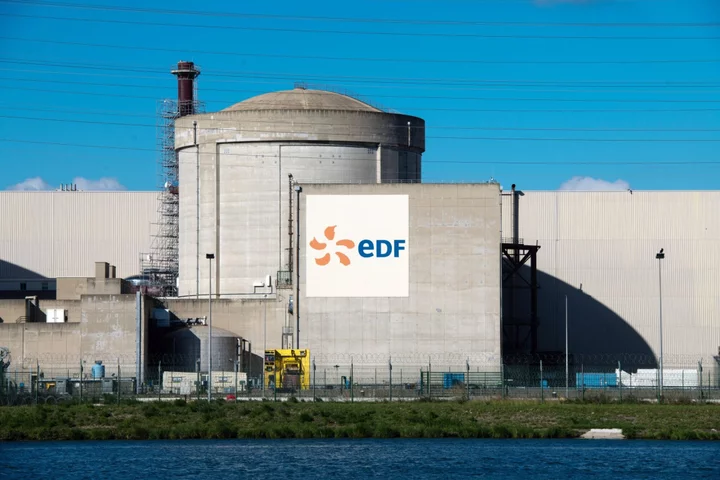Electricite de France SA is increasing the iron content of cladding for nuclear fuel rods to address a long-standing issue with corrosion, as a French newspaper reported that a reactor in China is facing similar issues.
The Chinese operator of the Taishan-1 plant has extended a refueling halt for months because the cladding on some fuel rods has deteriorated, French investigative and satirical newspaper Le Canard Enchaine said on Wednesday after first reporting the issue last week. There is insufficient iron in the zirconium cladding of the fuel assemblies, which were provided by EDF’s Framatome unit, the weekly newspaper said, citing an unidentified person.
Corrosion of fuel rod cladding is a phenomenon that’s also impacted the French nuclear fleet and is being eradicated by a change in the metal specifications, an EDF spokeswoman said in an email, responding to a Bloomberg query. Taishan-1 is one of a new generation of European Pressurized Reactors, or EPRs, that were designed by Framatome and are the world’s most powerful nuclear plants.
Investors remain wary of potential nuclear power issues in China as demand for air conditioning soars during summer. Europe is still grappling with high energy costs after Russia’s move to choke off gas deliveries was compounded by outages and repairs at many of EDF’s reactors.
EDF will take into account the feedback coming from Taishan before commissioning its first EPR in France, the country’s nuclear safety authority said. Flamanville-3, slated for fuel loading in the first quarter 2024, would be the only French plant potentially impacted by the issue, according to the watchdog.
Delayed Reactor
The startup of Flamanville-3, which has been delayed several times over the past decade because of construction challenges, is intended to reinforce security of power supply in France. Studies by EDF, with the support of Framatome, conclude that there’s no safety issue tied to the corrosion phenomenon for the first fuel loading of Flamanville-3, the spokeswoman for the state-owned utility said.
CGN Power Co., the majority owner of the two Taishan EPRs, said on June 9 that its Unit 1 started an annual refueling outage in the first quarter, due to the design requirement. It planned to do extra inspections and tests to accumulate experience. The company didn’t respond to a Bloomberg query about potential fuel issues.
The Taishan-1 unit was halted two years ago when vibration issues affected fuel rods. The problem was solved by reinforcing assemblies used by EPRs.
No problems have been detected at the Olkiluoto-3 EPR unit operated by Teollisuuden Voima Oyj in Finland, the country’s Radiation and Nuclear Safety Authority told Bloomberg in an email. TVO plans to undertake extensive inspections of OL3’s fuel bundles during the plant’s first annual maintenance next spring.
The fuel in Olkiluoto-3 is similar to the EPR plant in Taishan, but there are minor structural differences, the Finnish watchdog said.
EDF experienced some deterioration in the cladding at three of its 56 French units in 2021. That was due in part to the low proportion of iron in the cladding of the fuel assemblies, according to IRSN, a government advisory body on nuclear safety. EDF subsequently stepped up fuel inspections and took measures to mitigate the issues, IRSN said last year.
--With assistance from Kathy Chen.

